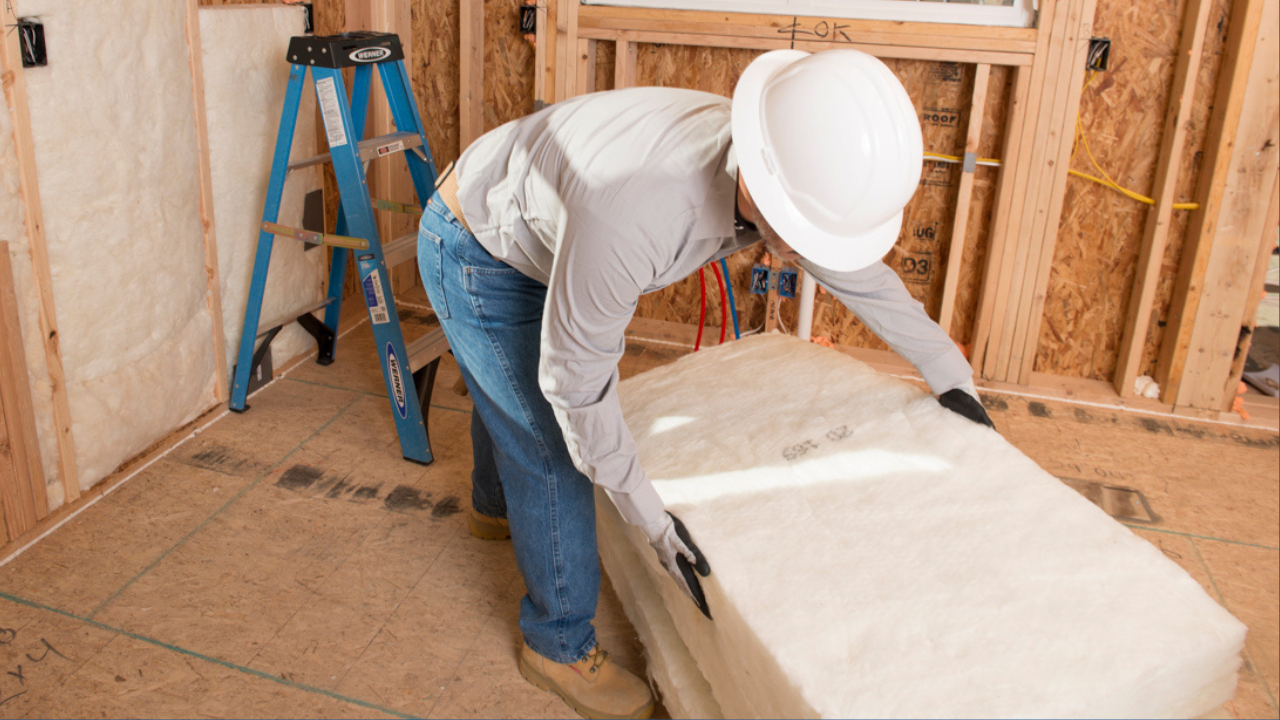Wondering whether to use faced or unfaced fiberglass insulation for a residential project? It’ll depend on where you’re insulating and what steps come next. We’ve got the breakdown on the different products so you’ll know exactly what to pick.
Unfaced insulation
- Commonly used in attics, crawlspaces, interior walls and between floors
- Can be left exposed
Unfaced insulation is a plain batt or roll of fiberglass insulation with no facing. It is Class A fire-rated, which means it can be left exposed, or used in specific fire-rated assemblies. Unfaced insulation can also be used with vapor retarders such as polyethylene or polypropylene (depending on local code). Unfaced insulation batts or rolls can be added to existing unfaced insulation.
These batts or rolls are held in place by nestling it between studs, joists or rafters in the walls. If used in an overhead application that will be left exposed, such as an attic, additional insulation supports will be required to keep it in place.
Johns Manville Formaldehyde-free™ Unfaced thermal and acoustical insulation offers R-values of up to R-49. Precut batts fit standard wall cavities, or rolls can be used for custom installation in any size cavity. It helps reduce sound transmission through walls, ceilings and floors, plus it is thermally efficient and reduces heat transfer.
Faced insulation
- Commonly used in exterior walls, attic ceilings and first-time applications
- Cannot be left exposed
Kraft or foil facedFaced insulation is a batt or roll of fiberglass insulation with an attached kraft paper or foil facing. Kraft and standard foil facings can burn and must not be left exposed. If an exposed application is required, use FSK-25 flame-resistant faced insulation.
Johns Manville Formaldehyde-free™ Kraft-faced thermal and acoustical insulation also offers R-values up to R-49 and comes in rolls or precut batts for standard cavities. Kraft-faced insulation is ideal for moisture control in exterior walls, plus it reduces sound transmission through walls, ceilings and floors.
In colder climate areas, vapor retarders (attached to the insulation or applied separately) are often placed toward the heated or conditioned side of the wall. This reduces water vapor penetration into the wall from the building interior. Check local building codes for vapor retarder requirements.
It’s also not recommended to install multiple layers of faced insulation. There should only be one vapor retarder installed in the appropriate location – otherwise moisture can become trapped between two layers and unable to dry.
Remember, always check local building codes, and consider that climate is a critical factor in determining insulation needs. Review climate zones, learn more about JM’s fiberglass products, or submit a question to our technical specialists.

